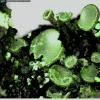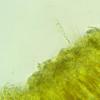
12-11-2021 00:03
Lepista ZacariasHi everybody,A week ago in my fiels trip I noticed

29-12-2025 17:44
Isabelle CharissouBonjour,J'aimerais savoir si d'autres personnes au

29-12-2025 17:12
 Bernard CLESSE
Bernard CLESSE
Bonjour à toutes et tous,Pourriez-vous m'aider à

29-12-2025 17:01
Gernot FriebesHi,I'm looking for help with this hyphomycete with

29-12-2025 08:30
Hello.A tiny ascomycete sprouting under Juniperus

29-12-2025 10:15
Hulda Caroline HolteHello, I found and collected this propoloid ascom

29-12-2025 09:38
Oskari VirtanenHi,could anyone help me identify this, I suspect P

I agree that the Dinolite image renders the fungus in too light a shade, though I did already tweak it somewhat to improve it from the initial.
This was found by a 7 year old who was also with us on our NW Fungus Group foray, on Sunday 15th October; in a very rotten stump, probably Betula or Quercus.
The site is a Lancashire Wildlife Trust Reserve called Mere Sands Wood north of Liverpool.
The UK GR is SD 4470 1570, which is equivalent to Long. - 6.953; lat. 49.936.
I had kept some of the specimen for the time being. ..... ?
Kind regards,
John Watt

Sorry, I used the Brit Geol converter but forgot that on our usual OS maps the first digit is not shown in large type, so you're quite right with your Long and Latitude. Instead of that first numeral, the OS National Grid systems divides the country up into 100km grids which each have two identifying letters (SD in this case) to complement that first numeral.
I have had a good look at the fragment of wood and it does look like Quercus (robur likely).
The finder was young James Roberts (8 yr) .
Thanks also for pointing out the Anamorph. I can have a look at that next time the microscope is out.





